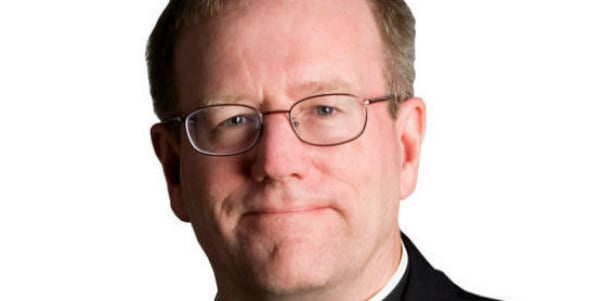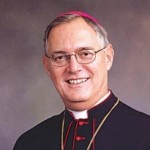
When I studied Anatomy and Physiology in college, the lesson that included microchimerism, became instructive to me on a different level. Learning that every child leaves within his mother a microscopic bit of himself–and that it remains within her forever–the dogma of the Immaculate Conception instantly became both crystal clear and brilliant to me.
Mary, then, was indeed a tabernacle within which the Divinity did reside – not for a limited time, but for all of her life. Understanding this (and considering how the churches seemed to get it ‘way before microscopes told us anything) the Immaculate Conception made and makes perfect sense: God, who is All-Good is also completely Pure; the vessel in which He resides, then, must be pure, too, or it would not be able to sustain all of that “light in which we see light itself.”
This relates heavily to our need to partake of frequent reconciliation, if our participation in the Eucharist is to be both respectful and fully efficacious in the imparting of the sacrament’s own graces. We owe to God our best efforts to “clean the place up” before welcoming him into our own physicality.
Actually, microchimerism also relates to the dogma of the Assumption of Mary as well. In the psalms we read “you will not suffer your beloved to undergo corruption.” Christ’s divine body did not undergo corruption. It follows that his mother’s body, which contained a cellular component of the Divinity–and a particle of God is God, entire–would not be allowed to corrupt as well.
But that discussion might be better for August! For now, read “A Word in Season” and ponder as Pat Gohn’s piece gets to the heart of the Immaculate Conception:
. . .the Angel does not address Mary by her name in this initial greeting. Instead, he uses the title “full of grace” and states that “the Lord is with thee: blessed art thou among women.” This title, which Catholics have customarily prayed in the Ave Maria, or Hail Mary, describes her true nature.
Mary’s person is full of grace. Mary is truly singled out from the rest of humanity in these phrases.
Notice also that Mary is addressed as “full of grace” even before the Angel announces God’s message asking her to be the mother of the Savior who was foretold.
Once again, don’t miss this distinction: At this early point in the conversation with the Angel, Mary has not yet been overshadowed by the Holy Spirit; still, she is addressed as “full of grace.” It is not as if she will become full of grace sometime in the future if she takes on this mission of maternity. She has yet to receive that invitation; that comes in later in the text.
No. Mary is full of grace. Period.
This is her ontological nature. Her being — her very existence — is full of grace according to God’s Word on the lips of the Angel.
This makes Mary unique. One-of-a-kind. Pure. Immaculate. “Blessed . . .”
You can read the rest here
UPDATE:
A few emailers want to really get into the deep and muddy waters and so I just want to clarify my meaning: I am only working on a “hunch” so to speak, that microchmerism more or less “affirms” the whole concept of why the angel Gabriel called Mary “Full of Grace” before ever using her name.
He acknowledged her State, first and foremost. Angels can’t lie, so she had to already be in that state of grace when Gabriel greeted her.
Since at that point she had not yet consented to be the “handmaid of the Lord” this can only mean she was in a state of grace previous to the conception of Christ. Hence, she must have been immaculately conceived – without original sin.
And my point, then, is simply that the microchimerism simply proves the dogmatic thesis. In a sort of echoing back way. :-)











